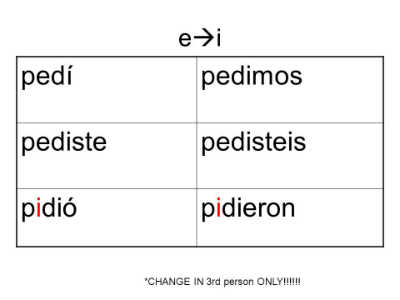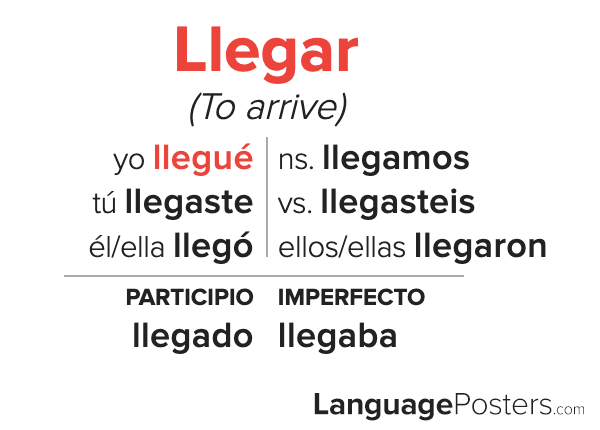

So what endings do we use for the Spanish preterite tense? Let’s see: Now that you know how regular verb endings work in Spanish, let’s just concentrate on endings alone. Naturally, the same as the simple past tense, the Spanish preterite tense is used to describe actions completed at some point in the past. The Spanish preterite tense or el pretérito is the equivalent of the simple past tense in English. What do you think? Wouldn’t that be useful? Spanish Preterite Tense – Regular Preterite Verb Endings

In Mondly, you can quickly see a verb’s conjugation by simply tapping on itīefore moving on to irregular Spanish verbs and more examples, let’s also explore the past and future of regular Spanish verbs. And don’t worry about the conjugations! In Mondly, you can quickly see a verb’s conjugation by simply tapping on it. If you want to go even further and achieve Spanish fluency, Mondly can help you learn Spanish fast in 5 minutes a day with compact and very entertaining lessons. Spanish verbs conjugations make sense now, don’t they? – vosotros/ vosotras: if the verb ends in -er, the ending will be –éis, and if the verb ends in –ir, the ending will be –ís ( vosotros/as com éis vs vosotros/as escrib ís). – nosotros / nosotras: if the verb ends in -er, the ending will be –emos, and if the verb ends in –ir, the ending will be –imos ( nosotros/as com emos vs nosotros/as escrib imos). N.B.: The only conjugation differences between verbs ending in -er and -ir are in the nosotros / nosotras and vosotros / vosotras forms. For verbs ending in -er or -ir, the following endings are added to the verb stem after removing the infinitive ending: For verbs ending in -ar, the following endings are added to the verb stem after removing the infinitive ending:Ĥ. In other words, only two categories of verb endings will need your attention.ģ. Verbs ending in -er and -ir share almost the same conjugations. You’ll easily recognize them by theirs endings: -ar, -er or –ir. There are three types of Spanish regular verbs. Now, here are a few rules you need to know about the Spanish regular verbs.ġ. Today, we are studying a few eloquent examples from both sides. The same as in English, the Spanish language has regular verbs that follow certain rules and irregular verbs that usually go wild and need to be learned by heart. There’s nothing scary about a little grammar once in a while. Spanish verbs: rules for regular Spanish verbsĮvery language has its rules and Spanish makes no exception (wink).

Are you ready? Let’s start with the basics. Today, we are talking about Spanish verbs, their conjugations, and some Spanish grammar rules that will naturally join the party. ¡Hola, Spanish language aficionado! Welcome to another essential Spanish lesson you’ll have to learn if you want to boost your Spanish conversation skills.


 0 kommentar(er)
0 kommentar(er)
